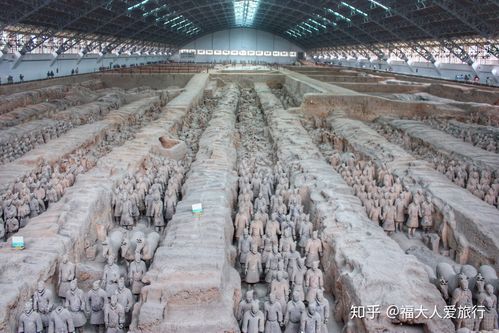
How Deep Are the Terracotta Army Pits?
A Subterranean Army
The Terracotta Army, a vast collection of life-sized terracotta sculptures depicting the armies of Qin Shi Huang, the first Emperor of China, is one of the most extraordinary archaeological discoveries of all time. Buried alongside the emperor in 210–209 BCE, these figures were meant to protect him in the afterlife. Their sheer scale and meticulous detail continue to awe and intrigue people around the world. One of the most common questions about this ancient wonder is: how deep were these figures actually buried?
The Depth of the Pits
The figures of the Terracotta Army are arranged in three main pits, each carefully constructed and covering a massive area. These pits, far from being shallow graves, descend to a considerable depth:
- Depth: The figures were buried in pits ranging from 15 to 20 feet (4.5 to 6 meters) deep. Imagine standing at the bottom of a swimming pool, and you'll get a sense of the scale of these subterranean chambers.
- Construction: The pits weren't simply holes in the ground. They were carefully constructed with:
- Rammed earth walls: These thick, sturdy walls provided structural support and helped to protect the figures from the elements.
- Wooden ceilings: Massive wooden beams and planks formed roofs over the pits, further shielding the army below.
- Layers of earth: Finally, the pits were sealed with layers of compacted earth, effectively hiding them from view for centuries.
The Scale of the Burial Complex
To truly understand the depth of the Terracotta Army pits, it's crucial to consider the vastness of the entire complex:
- Pit 1 (Largest): The largest pit, containing the main force of the terracotta army, stretched as far as two football fields laid end to end. Imagine the engineering feat required to excavate, construct, and then bury such an extensive area!
- Thousands of Figures: The pits housed not just soldiers, but also chariots, horses, and other figures, each carefully positioned. This elaborate arrangement, combined with the depth of the burial, speaks to the immense effort and resources invested in their creation.
Why Bury Them So Deep?
The depth of the Terracotta Army pits was likely influenced by several factors:
- Protection: The depth would have protected the figures from natural elements like rain, wind, and erosion, as well as from potential looters.
- Symbolic Significance: In ancient Chinese cosmology, the underworld held great significance. Burying the army at such a depth could have been a way of symbolically placing them within the realm of the afterlife, providing the emperor with an eternal guard.
FAQs
Q: How were the Terracotta Army pits discovered?
A: The pits were discovered accidentally in 1974 by farmers digging a well.
Q: Are the pits open to the public?
A: Yes, all three pits are now part of a museum complex and are open to the public, offering a glimpse into this ancient wonder.
Q: Are archaeologists still excavating the Terracotta Army pits?
A: Yes, archaeological work continues at the site, with new discoveries being made, further adding to the mystery and allure of this ancient army.